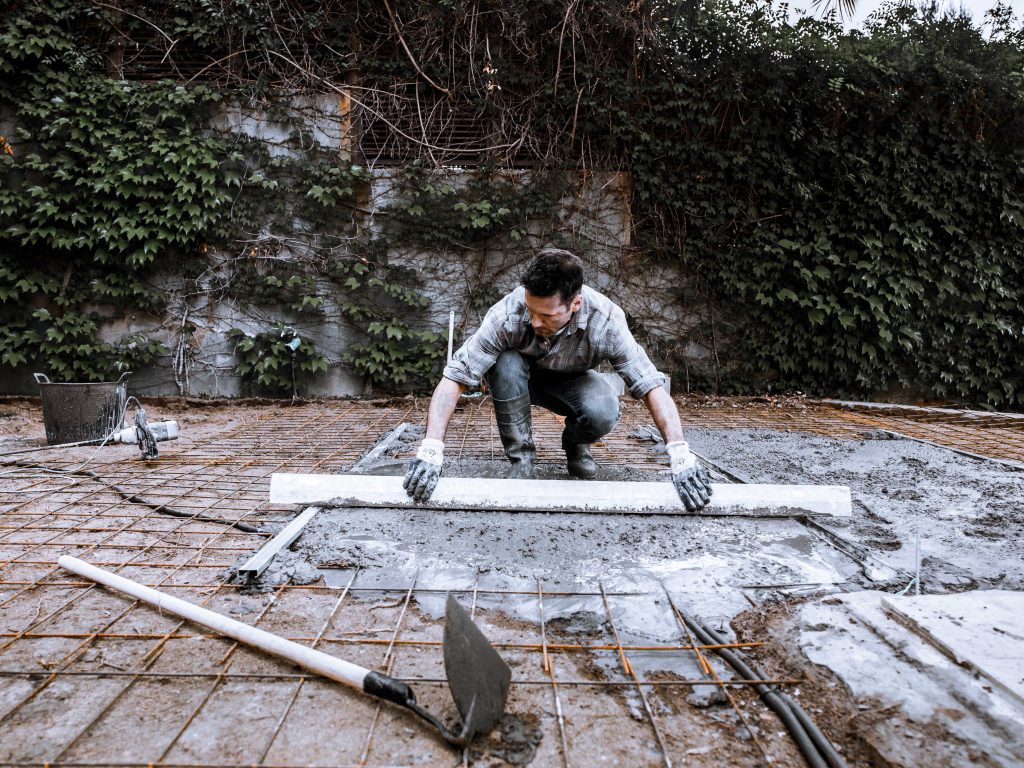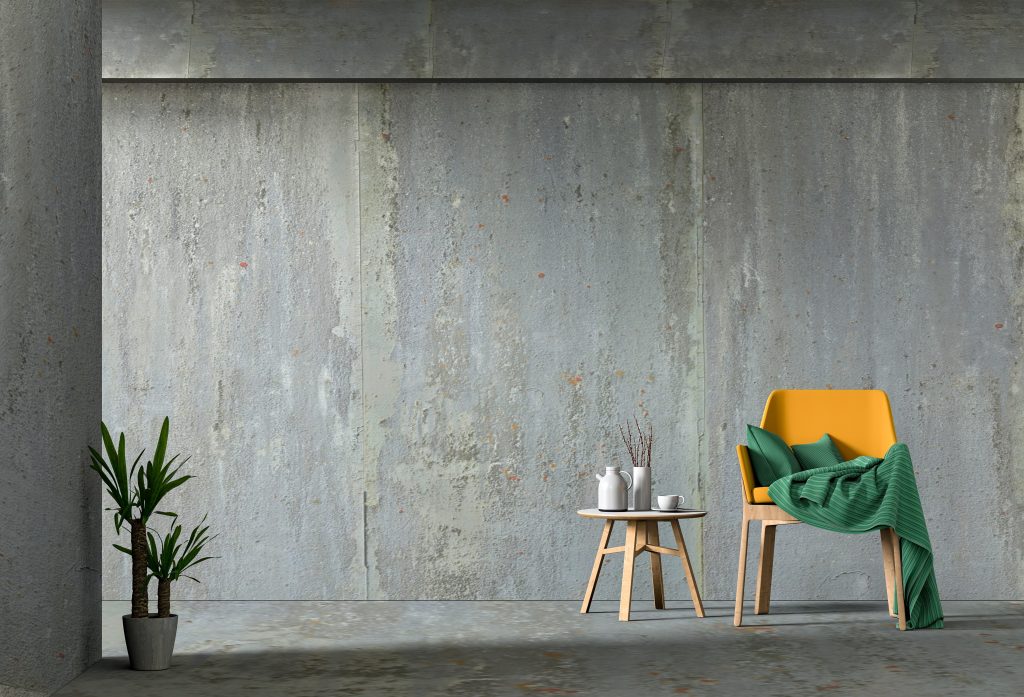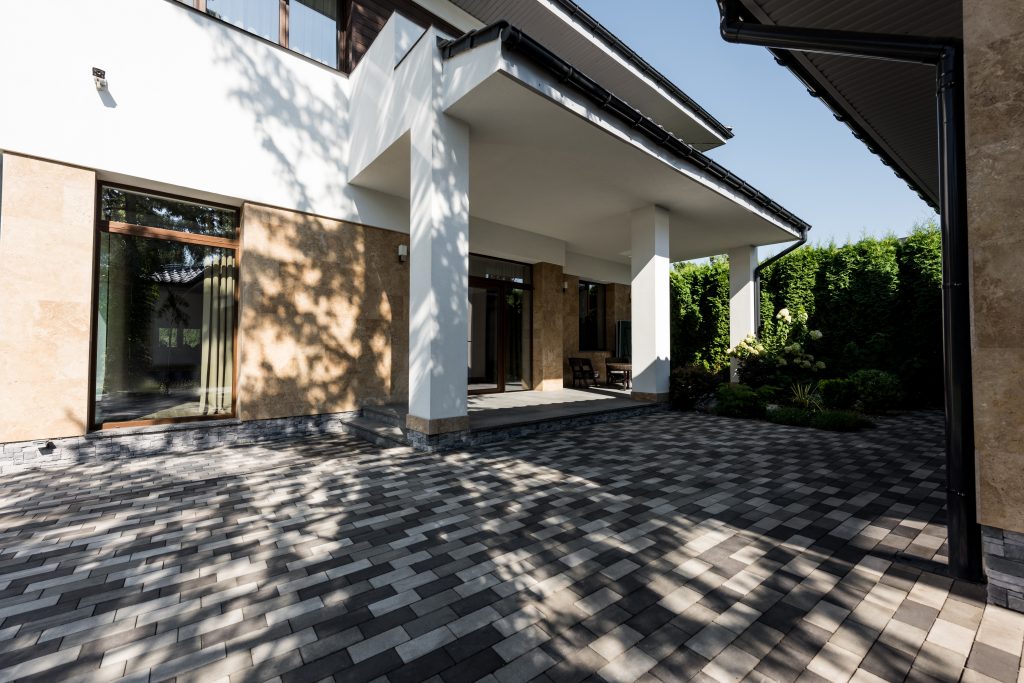Cork flooring has gained popularity as a sustainable and environmentally friendly alternative to traditional flooring materials. When installed correctly, cork flooring can provide a durable and comfortable surface that is easy to maintain.
Installing cork tiles on concrete is a popular choice for homeowners who want to create a unique and natural look for their floors. Before installing cork tiles on concrete, it is essential to properly prepare the surface to ensure a strong bond between the tiles and the concrete.
This article will provide a step-by-step guide on how to prepare the concrete surface, choose the right cork tiles, lay the tiles, and seal and finish the floor. Additionally, we will discuss the maintenance of cork flooring to ensure its longevity and durability.
By following these instructions, homeowners can create a beautiful and functional cork floor that will last for years to come.
Preparing the Concrete Surface
To ensure proper adhesion of the cork flooring, it is crucial to prepare the concrete surface by removing any debris, filling in cracks, and ensuring that the surface is clean and dry.
Before beginning any work on the concrete surface, it is essential to inspect the surface for cracks, holes, or other imperfections. Any cracks or holes should be filled with an appropriate concrete repair compound. This will ensure that the surface is level and smooth, which is necessary for the cork flooring to adhere correctly.
Once the concrete surface is repaired and level, it is time to clean the suleverface thoroughly. The surface should be swept or vacuumed to remove any debris or dust. After this, the surface should be washed with a concrete cleaner and left to dry completely. It is essential to ensure that the surface is entirely dry before proceeding with any further steps. This is because any moisture on the surface can interfere with the adhesive properties of the cork flooring and cause it to peel or lift.
After the concrete surface is clean and dry, it is time to apply a primer. The primer helps to bond the cork flooring to the concrete surface. It is crucial to select a primer that is specifically designed for use with cork flooring. The primer should be applied evenly, using a roller or brush. Once the primer is applied, it should be left to dry completely before proceeding with the installation of the cork flooring.
By following these steps, the concrete surface will be adequately prepared for the installation of cork flooring, which will ensure a long-lasting and durable flooring solution.
Choosing the Right Cork Tiles
Selecting the appropriate cork tiles is crucial for ensuring the success of the project and achieving the desired aesthetic outcome. Cork tiles come in different sizes, thicknesses, colors, and textures. The size of the tiles depends on the size of the room and the desired pattern. The thickness of the tiles affects the level of insulation, soundproofing, and comfort. The color and texture of the tiles affect the visual appeal of the floor and its compatibility with the furniture and decor of the room. Therefore, it is important to consider these factors before choosing the cork tiles for the project.
The most common size of cork tiles is 12’x12′, but they can also come in 24’x24’or 18’x18′. The size of the tiles affects the amount of cutting and fitting required during installation. The thickness of cork tiles ranges from 1/4’to 1/2′. The thicker the tiles, the more insulation, soundproofing, and comfort they provide. However, thicker tiles may require additional subfloor preparation, such as leveling or sanding.
The color of cork tiles ranges from light beige to dark brown, and the texture ranges from smooth to rough. The color and texture of the tiles can be customized by staining or painting them. The quality of cork tiles also affects the durability and lifespan of the floor. High-quality cork tiles are made of pure cork without any fillers or adhesives. They are also coated with a protective layer that resists scratches, stains, and water damage.
Low-quality cork tiles may contain synthetic materials that compromise the natural properties of cork and reduce the lifespan of the floor. Therefore, it is important to choose cork tiles from reputable manufacturers and suppliers that provide warranties and certifications for their products.
Laying the Cork Tiles
The process of laying cork tiles begins with preparing the subfloor by ensuring it is clean, level, and dry. Any debris or dust should be removed, and the surface should be swept or vacuumed thoroughly. If there are any uneven areas, they should be leveled with a self-leveling compound. It is important to note that the subfloor must be completely dry before installation, as any moisture can cause the cork tiles to warp or buckle.
Once the subfloor is prepared, the cork tiles can be laid out in the desired pattern. It is recommended to start in the center of the room and work outwards towards the walls. A chalk line can be used to ensure the tiles are laid in a straight line. The tiles should be laid tightly together, but not so tightly that they are touching. A small gap should be left between each tile to allow for expansion.
After the tiles are laid, they should be rolled with a floor roller to ensure they are firmly adhered to the subfloor. It is important to follow the manufacturer’s instructions for adhesive application and drying time.
Once the adhesive is dry, the gaps between the tiles can be filled with a cork filler. The filler should be applied with a putty knife and smoothed out to create a level surface.
Finally, the cork tiles can be sealed with a polyurethane sealer to protect them from moisture and wear.
Sealing and Finishing the Floor
Sealing and finishing the cork floor involves applying a polyurethane sealer to provide protection against moisture and wear, creating a glossy surface that reflects light like a mirror.
Before applying the sealer, it is important to clean the floor thoroughly and remove any debris or dust. This can be done by sweeping, vacuuming, and mopping the floor using a mild detergent.
Once the floor is clean and dry, the sealer can be applied using a brush, roller, or sprayer. It is important to follow the manufacturer’s instructions for application, including the recommended number of coats and drying time. Typically, two to three coats are recommended for optimal protection and durability.
After the sealer has dried, the floor can be finished with a wax or polish to enhance the shine and protect the surface from scratches and scuffs. It is important to use a product that is specifically designed for cork flooring and to follow the manufacturer’s instructions for application.
With proper sealing and finishing, cork flooring can provide a beautiful and durable surface that is resistant to moisture, wear, and stains.
Maintaining Your Cork Flooring
Proper maintenance of cork flooring is essential to ensure its longevity and preserve its natural beauty.
One of the most important steps in maintaining cork flooring is to keep it clean and free from dirt. Cork flooring is naturally resistant to dust and dirt, but it is still important to sweep or vacuum the floor regularly to prevent the buildup of debris. It is also important to avoid using harsh chemicals or abrasive cleaners, as these can damage the surface of the cork and cause it to lose its natural shine.
In addition to regular cleaning, it is important to protect cork flooring from scratches and dents. This can be done by placing felt pads on the legs of furniture and avoiding dragging heavy objects across the floor.
It is also important to avoid exposing cork flooring to direct sunlight, as this can cause the color to fade over time. To prevent fading, it is recommended to use blinds or curtains to block out the sun’s rays.
It is important to maintain proper humidity levels in the room where cork flooring is installed. Cork is a natural material that can expand and contract with changes in humidity, so it is important to keep the humidity level between 35% and 65%. This can be achieved by using a humidifier or dehumidifier as needed.
Proper maintenance of cork flooring can help to ensure its longevity and preserve its natural beauty for years to come.
Frequently Asked Questions
How long will the cork flooring last?
The lifespan of cork flooring varies depending on various factors such as the quality of the cork, the installation process, and the maintenance practices. Generally, cork flooring can last for up to 25 years or more, depending on how well it is cared for.
Regular cleaning and maintenance can help to extend the lifespan of cork flooring. It is important to avoid exposing cork flooring to excessive moisture and direct sunlight, as these can cause damage. Additionally, it is recommended to avoid wearing high heels or dragging heavy furniture on cork flooring, as this can scratch and damage the surface.
In summary, the lifespan of cork flooring can be extended through proper care and maintenance, and can last for up to 25 years or more.
Can cork flooring be installed over radiant heating systems?
Cork flooring can be installed over radiant heating systems, but it is important to follow specific guidelines to ensure proper installation.
The subfloor must be completely level and free of any debris or moisture.
A moisture barrier should also be installed to prevent any moisture from seeping into the cork flooring.
It is recommended to use a floating installation method, which allows the cork flooring to expand and contract with changes in temperature.
Additionally, the temperature of the radiant heating system should not exceed 85°F to prevent damage to the cork flooring.
With proper installation and maintenance, cork flooring can last for many years and provide a comfortable and sustainable flooring option for homes with radiant heating systems.
Is cork flooring suitable for high-traffic areas?
Cork flooring is a suitable option for high-traffic areas. It is a durable and resilient material that can withstand heavy foot traffic without showing signs of wear and tear.
Additionally, cork flooring is highly resistant to moisture and mold, making it ideal for areas that are prone to humidity or spills.
However, it is important to note that the durability of cork flooring can vary depending on the quality of the product and the thickness of the wear layer.
Therefore, it is important to choose a high-quality cork flooring product and to follow proper installation and maintenance procedures to ensure its longevity in high-traffic areas.
Will cork flooring be affected by moisture or humidity?
Cork flooring is a natural and sustainable option that has gained popularity in recent years due to its unique properties. However, one concern that arises with cork flooring is its susceptibility to moisture and humidity.
Cork is a porous material that can absorb moisture, which can lead to swelling and warping. Therefore, it is important to ensure that the subfloor is dry and free of moisture before installing cork flooring. Additionally, it is recommended to use a moisture barrier and to avoid installing cork flooring in areas with high humidity or moisture, such as bathrooms or basements.
Proper installation and maintenance can help minimize the effects of moisture on cork flooring and ensure its longevity.
How does cork flooring compare to other types of flooring in terms of environmental sustainability?
In terms of environmental sustainability, cork flooring is considered to be an eco-friendly option compared to other types of flooring.
The production process of cork flooring involves harvesting the bark of cork oak trees, which does not harm the tree itself.
Furthermore, cork is a renewable resource as the trees continue to grow and produce bark.
The material is also biodegradable and can be recycled at the end of its lifespan.
In comparison to hardwood flooring, cork flooring has a lower environmental impact as trees used for hardwood take longer to mature, and the production process involves more energy and resources.
Additionally, cork flooring has natural insulating properties, which can reduce energy consumption for heating and cooling.
Overall, cork flooring can be considered a sustainable and environmentally friendly flooring option.
Conclusion
In conclusion, installing cork flooring on concrete for tile installation requires careful preparation, selection of appropriate materials, and precise execution. The concrete surface must be thoroughly cleaned, leveled, and dried before laying the cork tiles. It is important to choose cork tiles that are suitable for the intended use and environment, and to follow the manufacturer’s instructions for installation.
The tiles should be laid in a staggered pattern, with adhesive applied evenly and allowed to dry completely. Once the tiles are in place, the floor should be sealed and finished with a protective coating that enhances the natural beauty and durability of cork.
To maintain your cork flooring, it is recommended to avoid excessive moisture, direct sunlight, and heavy furniture or appliances. Regular cleaning with a soft broom or vacuum and a damp mop with mild detergent is sufficient to keep the floor clean and hygienic.
It is also important to periodically inspect the floor for any signs of damage or wear, and to address them promptly to prevent further damage. With proper installation and maintenance, cork flooring can provide a comfortable, eco-friendly, and stylish option for your home or office.
So, go ahead and give your floor a corky twist!

 CALL US NOW
CALL US NOW



